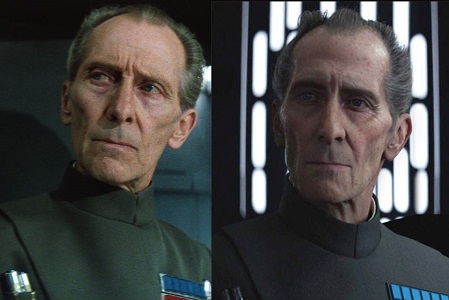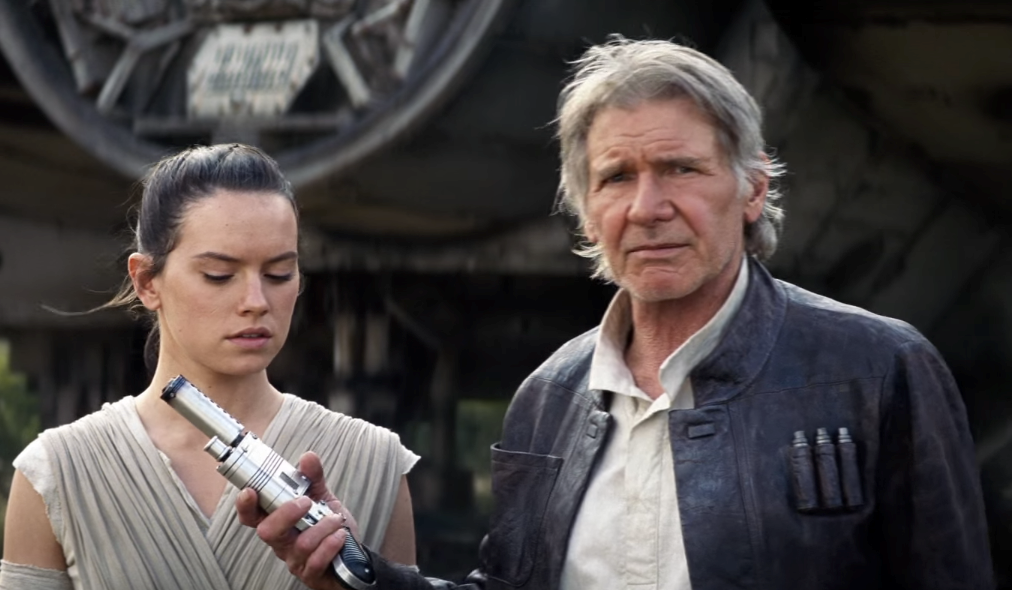Review: Star Wars After Lucas by Dan Golding

It’s no surprise that the new era of Star Wars storytelling has spawned a major resurgence of interest in the franchise – as well as attention to how Lucasfilm has managed it – from a wide variety of perspectives, including Star Wars fans (longtime, lapsed, and newfound), business analysts, film industry professionals and critics, and academia. In 2019 alone, academic presses published three scholarly tomes directly addressing the present and future of the Star Wars franchise after Disney’s acquisition of Lucasfilm in late 2012 and the release of new films beginning with The Force Awakens in December 2015. The first of these I’ve had time to read and review is Star Wars After Lucas: A Critical Guide to the Future of the Galaxy (University of Minnesota Press, 2019) by Dan Golding, who is a senior lecturer in media and communications at Swinburne University of Technology in Melbourne, Australia.
Golding never hides from the fact that he is a lifelong Star Wars fan, and his passion for the franchise and his commitment to approaching it thoughtfully and diligently is readily apparent throughout the book. At the same time, Golding lives up to his title: only the introduction and first chapter explore the history of the franchise, mostly to set up elements that will pay off later. Six chapters discuss various aspects of The Force Awakens and its implications for the future of Star Wars. A pair of chapters consider Rogue One in conjunction with The Force Awakens and Star Wars Rebels, respectively, giving the animated series its due for how it handles the themes of Star Wars in a way that holds true to Lucas’ vision. The final chapter evaluates the ramifications of The Last Jedi in light of ideas Golding developed over the course of the book.
Overall, I recommend Star Wars After Lucas for those who are interested in an academic perspective on how The Force Awakens relaunched the film side of the franchise and set the foundation, in stronger and weaker ways, for the new era of Star Wars. In this review, I want to highlight two prominent themes of Golding’s book that relate to some of the commentary and criticism of the Sequel Trilogy we have developed at FANgirl Blog.

Nostalgia and Star Wars
One thread running throughout Star Wars After Lucas is Golding’s consideration of the importance and ramifications of the concept of nostalgia in the new era of the franchise – a topic that probably could, needless to say, support an entire book on its own. But for Golding it is the focus only for one chapter, and otherwise serves as a theme that permeates his analysis of the relaunch of Star Wars storytelling.
Golding draws on a variety of academic work to help define nostalgia. The late professor Svetlana Boym, a Comparative Literature scholar at Harvard and expert on post-Soviet Eastern Europe, described (p15) nostalgia as “the repetition of the unrepeatable,” in the sense of seeking to revisit or recapture a past moment; later he quotes (p190) a different formulation by Boym deeming nostalgia to be “fantasies of the past determined by needs of the present.” Golding agrees, elaborating (p15) that “the nostalgist necessarily remakes history for the contemporary moment.” Synthesizing other scholars, he also frames (p55) nostalgia in terms of a yearning for an idealized past as an alternative to a disappointing present. Golding does not shy away from the darker sides of nostalgia, either. He points out (p13-14) that critical perspectives on society and media, such as feminism and anti-racism, view nostalgia negatively because it can be “a strategy of repression” used “to empower the present with what has been lost to the past.” (Discussing the views of some commentators who do not interpret the Star Wars films as particularly progressive, despite Lucas’ own personal political views, Golding notes (p27) that the Original Trilogy’s Rebellion had as its goal the restoration of the old order in the galaxy, not the creation of a new and different future.) Likewise, Golding references (p55) the idea of “weaponized nostalgia” in his discussion, “not just because nostalgia is wielded as a tool to appeal to audiences’ emotional drives, but because it is aimed like a weapon, too.”
Golding also reminds the reader that nostalgia is not new to Star Wars by any means. He recounts (p12) the views of “Fredric Jameson, the famed theorist of postmodernism,” who defined A New Hope as a nostalgia film that reclaims the spirit of the 1930s-50s movie serials beloved by Lucas in his youth and uses it to reawaken a sense of the past associated with them. Furthermore, Golding explains (p182-184), serial storytelling is fundamentally a nostalgic form, and Star Wars has itself been serialized since 1980. Serial film or television stories necessarily rely on memory of other installments, including while in the act of watching one of them – and usually it is far more subtle than a direct self-reference such as Threepio’s recounting of prior heroics to the Ewoks in Return of the Jedi or Artoo replaying Leia’s hologram in The Last Jedi (or, even more overtly, a television clip show). Even when the franchise has not dived head-first into nostalgia, some element of it always has been part of Star Wars.
It is undeniable, however, that the early years of the Star Wars relaunch overtly relied on nostalgia in numerous ways, and especially nostalgia for the Original Trilogy and for the generation of fans who grew up alongside it. Golding’s second chapter discusses the marketing for The Force Awakens, which heavily featured nostalgia, including weaponized nostalgia. Perhaps no single piece of promotion held more layers of meaning than Han Solo’s line of dialogue in the first trailer: “Chewie, we’re home.” At the same time, Golding notes that the heavy-handed emphasis on Original Trilogy nostalgia implicitly denigrated the Prequels, apparently based on a determination that Star Wars needed to send the message to the prospective audience that its next films would be more like the former and less like the latter. He quotes (p151) Kathleen Kennedy’s remark in the home video special features for Rogue One: “We can go through a period of nostalgia, but what are we going to do with future generations who want to step into their own era of this vast mythology and universe called Star Wars? And that’s what I think these original Star Wars Stories are going to give us an opportunity to explore.” Yet, as Golding explains (p152), Rogue One is literally inextricably connected to A New Hope in story and visual design, making it “curiously captive to seriality and film history and what has already been assembled (and reassembled). This is a compellingly strange turn for the future of nostalgia.”

Golding contrasts The Force Awakens, which brought back Original Trilogy actors to play older versions of their characters, with Rogue One deploying computer graphics to portray the likenesses of Grand Moff Tarkin and Princess Leia as they appeared in 1977, a very different type of nostalgia for the earlier film. Golding also notes (p143) the explicitly nostalgic talking point emphasized during Rogue One’s promotion: that the filmmakers aimed to match Original Trilogy Star Wars the way you remember it, rather than how it really was, providing them with license to improve upon the past rather than simply mirror it. Similarly, he highlights (p168-169) the Star Wars Rebels storyline with Kanan and the Bendu as effectively calling back to George Lucas’ moral view than neutrality in the face of evil is not an option. Golding praises Rogue One and Rebels for more overtly portraying the fascism and tyranny of the evil Empire onscreen than the Original Trilogy had done, and in both instances opposed by diverse groups of rebels led by women. At the same time, Golding concedes, Rogue One is a male-centered film and its Scarif beach scenes were filmed in the Maldives during a period when its government was silencing dissent, imprisoning journalists, and suspending other human rights; ultimately, he concludes (p175), “Rogue One has, at its heart, more contradictions than clarity.”
In other chapters, Golding explores additional angles on nostalgia in the new era. He analyzes John Williams’ score for The Force Awakens, including some of the recurring themes and motifs as nostalgic elements. He also examines the theme of death and nostalgia in the Sequel Trilogy, from the murder of Han Solo in The Force Awakens to the real-life passing of Carrie Fisher shortly after the conclusion of filming on The Last Jedi. Critically, he adds (p186), “It is worth asking where Leia has been in the Disney era … we have to admit that she has hardly been in the films at all.” He also remarks, however, that this puts Star Wars “in line with the broader patterns of the legacy film,” which tend to emphasize fathers and sons and elide mothers.
Legacy Films: The Force Awakens and Sequel Trilogy
Golding’s third chapter situates The Force Awakens within the broader context of a trend in the Hollywood film industry of making “legacy films,” which he identifies as a distinct way of reviving a nostalgic property to tell a new story. Recent years have seen a variety of revivals of different types, as studios perceive that cashing in on existing audience interest is less risky than trying to strike gold with a new and unfamiliar tale. Some have been reboots, such as Batman Begins (2005) and Casino Royale (2006). Others are late-sequel films, reprising the original actors but without a transition to new characters, such as Zoolander 2 (2016, from the 2001 original) and xXx: The Return of Xander Cage (2017, previous films in 2002 and 2005). Though Golding does not discuss them in the chapter, Disney’s live action remakes like Beauty and the Beast (2017) and Aladdin (2019), or The Jungle Book (2016) and The Lion King (2019), are another way of reprising nostalgic properties, in this case the animated classics.
The legacy film is something different from each of these, because its core conceit is passing the baton from a legacy character to a new character. This allows the story to continue without being forever constrained by the original cast, building on the audience’s familiarity and fondness for the existing narrative to create emotional investment in future installments. The legacy film has both the old and the new, and connects them. Golding emphasizes (p190) that this dynamic is intentional and important: “This is why the legacy model is so important to this contemporary reworking of the nostalgia film: the past is returned and sent forward in a single motion.”
In the chapter, Golding identifies (p71-74) five characteristics of a legacy film:
- an original actor reprises their role as an aged version an iconic character
- a new character is introduced who is primed to take up the heroic mantle
- like a reboot, the movie repeats and reprises narrative concerns from the original
- one or more handover moments occur between the legacy character and the successor character
- the narrative impetus has shifted to the successor character by the movie’s ending
Each of these elements appears in The Force Awakens (2015), of course, with Harrison Ford’s Han Solo filling the legacy character role and Rey and Finn as a duo of successor characters who inherit his legacy over the course of the film. Golding applies the legacy model to Sylvester Stallone in Creed and Arnold Schwarzenegger in Terminator Genisys, released the same year; he also evaluates two other legacy films involving Harrison Ford, Indiana Jones and the Kingdom of the Crystal Skull (2008) and Blade Runner 2049 (2017). Additional examples in his discussion include Star Trek (2009), Tron: Legacy (2010), and Jurassic World (2015).

Relaunching the Star Wars movies with a legacy film was a sensible decision. It aligned with George Lucas’ intentions in reaching agreements with Ford, Mark Hamill, and Carrie Fisher to reprise their roles – and with decades of nostalgia among fans hoping to see them on screen in Star Wars again. It fit with the franchise’s longstanding paratext, too, which contained numerous Expanded Universe / Legends stories with the Original Trilogy heroes as legacy characters and a new generation of young heroes taking up the mantle after them. And, as Golding elaborates (p83-88), it suited the filmmaking talents of J.J. Abrams, whose preceding films – Mission Impossible III, Star Trek, Super 8, and Star Trek Into Darkness – each relied significantly on nostalgia and legacy film characteristics.
In addition, however, Golding discusses ways in which the new era of Star Wars films sought to move the franchise forward. His fourth chapter evaluates the uneven progress toward increasing diversity in Star Wars. Kathleen Kennedy hired diverse members for her initial Story Group, but only white male fanboy auteurs as movie writers and directors. The initial 2014 cast photo for The Force Awakens raised questions (p101) whether it would be “business as usual in the while male-dominated Star Wars universe.” The hero trio of the Sequel Trilogy turned out to be a white woman and two men of color, facing off against a white male villain who idolized Darth Vader; Golding recounts (p111) Pablo Hidalgo’s (since-purged) tweet commenting that, “I will say, Kylo feels like the right kind of villain for today.” Golding concludes, accurately, that Lucasfilm has made some improvements in diversity but needs to do better.
Golding’s final chapter considers the impact of The Last Jedi having what he terms (p203) a “decidedly mixed” reception among fans. Golding writes favorably about the film’s message that Star Wars cannot remain bound to nostalgia and must learn to grow beyond its original characters and trilogy – including Rey ultimately adopting the right perspective that we should learn from the past, rather than rejecting it as Kylo and Luke did. He also considers whether the movie as a whole is really as disruptive and radical to the franchise at it may seem. Nonetheless, Golding also concedes (p198) that The Last Jedi is “a challenging piece of filmmaking in the context of the Star Wars franchise,” in part because (p194) “in its questioning of history” it “dramatically reversed a lot of what had come to be expected from the pattern of the legacy film.” Similarly, in discussing its story arc for Poe, reconceiving “make-it-up-as-you-go heroism” as “macho bluster” with gendered connotations, Golding recognizes (p205) that doing so “questions one of the core pleasures of the Star Wars franchise.” He mentions other ways, too, in which The Last Jedi contests the fundamental ideas of the Star Wars franchise rather than reinforcing or expanding them. Golding is surely correct that some amount of evolution, rethinking and updating the franchise rather than keeping it static, is necessary for Star Wars to endure through new storytelling – but it remains an open question whether the choices made in The Last Jedi succeeded in carrying out such evolution in a way that will, over time, unfold as a net benefit to the franchise.

That issue arises not only for the overall franchise as a whole, but also with regard to the Sequel Trilogy’s treatment of the Original Trilogy legacy characters. Golding describes (p75-78) how, as part of returning the past to the audience while sending the story forward, legacy films contain a Legacy Character’s Journey: story beats for the legacy character that mark a series of stages before ultimately passing the baton to the successor character. Golding illustrates the journey with examples from across the legacy films he discusses; interestingly, applying his journey beats to Star Wars may explain in part why the Sequel Trilogy has struggled to attain audience acceptance as effective legacy films.
- “The legacy character begins the story
experienced, but reinitiated to everyday life instead of continuing their
adventuring ways.” (p75)
- In The Force Awakens, Han Solo has reverted to a smuggler and Leia Organa to an insurgency leader.
- In The Last Jedi, Luke Skywalker is a fisherman hermit.
- “The legacy character’s call to return to
adventure usually comes in the form of meeting the successor character, who
might ask them for help or guidance, which they may initially refuse.” (p75)
- In The Force Awakens, Han initially rebuffs Rey and Finn.
- In The Last Jedi, Luke refuses to train Rey, then agrees to teach her only to make his point about why the Jedi Order needs to end.
- “The legacy character reluctantly rejoins the
fight and offers mentorship to the successor character, sometimes on the
successor’s insistence or as the result of events that necessitates them to
alter course.” (p75)
- In The Force Awakens, Han’s reluctance is broken first by the insistence of Rey and Finn that they need to deliver BB-8 to Leia’s Resistance because the droid holds the map to vanished Luke, and then by necessity after the First Order’s attacks with Starkiller Base and on Takodana.
- In The Last Jedi, by contrast, Rey’s insistence never changes Luke’s mind, and she departs on acrimonious terms with Luke still refusing to return to heroics; it is instead the conversation with Yoda, another legacy character, who changes Luke’s mind. (Golding charitably asserts (p197) that “it is through Rey that Luke realizes that his rejection of the past has gone too far” because Luke ultimately does stand down the First Order with a laser sword, renouncing his earlier snide rhetorical question to Rey.)
- “The legacy character eventually finds purpose
in this mentoring role, and realizes the fated nature of their relationship to
the successor character during the film’s finale. In this moment, they fully
give themselves to the successor’s cause, perhaps through sacrifice or through
a total commitment to a supporting role.” (p75&78)
- In The Force Awakens, Han certainly revels in his mentoring role to Finn at D’Qar and during the Starkiller Base infiltration, but his sacrifice does not directly advance the passing of the baton to Rey (or Finn) like Obi-Wan Kenobi’s death in A New Hope or Qui-Gon Jinn’s death in The Phantom Menace. Instead, Han gives his life trying to reach the good inside his son, Kylo Ren, the movie’s villain. This act only indirectly aids Rey two movies later in The Rise of Skywalker, when his last memories of his father help guide Ben Solo to return to the light side and inspire him to make his own similar act of self-sacrifice to save Rey from dying.
- In The Last Jedi, once Luke overcomes his reluctance he fully commits to serving the cause to which Rey asked him to return: the Resistance. His manner of doing so is a fatal exertion of astral projection to become a legend, the spark of hope the galaxy needs to believe that the First Order can be defeated.
- “The legacy character has therefore undergone their own identifiable journey, from normalcy and reluctance to total support of the successor hero, and a withdrawal from the protagonist’s role.” (p78)
Finally, as Golding mentions (p186), Lucasfilm’s decision to leave Leia’s primary storyline as a legacy character until Episode IX had unfortunate consequences. Even in The Force Awakens and The Last Jedi, filmed before Carrie Fisher’s death, Leia has small supporting roles to enable the spotlight to focus on Han and Luke, respectively. It is difficult to know how Leia’s arc might have paid off in Episode IX had Fisher lived, but The Rise of Skywalker’s extremely limited use of her character left it unable to deliver a character arc comparable to the male legacy leads in the first two films in the trilogy.
Star Wars After Star Wars After Lucas
Giving the timing of its writing, Golding’s book was unable to evaluate and analyze the story or reception of Solo, much less The Mandalorian or The Rise of Skywalker, which released after it was published. Nevertheless, much of what Golding discusses certainly can be applied by the reader to various aspects of those stories, as well. In addition to potential risks for the franchise that he expressly identifies as such in his chapters, the roots of several other ill-advised Lucasfilm decisions in storytelling or franchise management can be found within the scope of topics he discusses.
Notably, Golding gives no indication of having possessed any inside knowledge of production processes or decision-making within Lucasfilm, which means his insights and prescient analyses have their basis in his academic background and deep familiarity with Star Wars. The fact that multiple significant challenges for Star Wars have come to light since Golding’s monograph was written, yet which he was able to anticipate in one way or another, provides more evidence to support the idea that the franchise’s difficulties were not the product of unforeseeable mysteries. For Star Wars to attain and maintain a path of consistent success, Lucasfilm needs to be willing to be guided by a wider variety of insights and perspectives on the past, present, and future of Star Wars.











